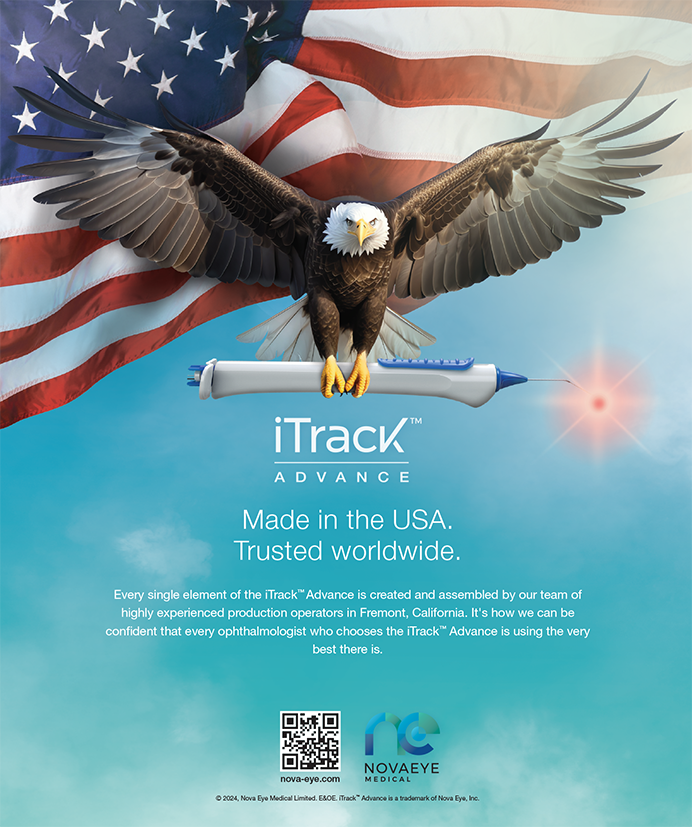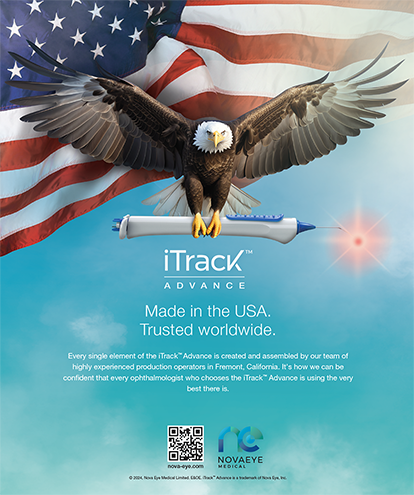The ability to visualize the retinas of patients at high risk for retinal diseases is important but too often overlooked. Cataract patients should never receive an IOL that could interfere with visualization of the fundus. For example, diabetics may require panretinal photocoagulation for retinopathy, high myopes are at risk for retinal detachment, those who have experienced early posterior vitreous separation are at risk for retinal tears, and anyone with age-related macular degeneration may need treatment. These high-risk patients require an IOL that will not interfere with posterior segment evaluation down the road. Just because pa tients can see well through the IOL today does not guarantee the same for their retinal surgeon tomorrow.
PREVENTING POSTERIOR CAPSULAR OPACIFICATION
Retina surgeons have always been concerned about postoperative capsular opacification (PCO) that could interfere with surgery on the posterior segment. Because they include proper cortical cleanup and irrigation of residual cells from the capsular bag, today's surgical techniques minimize the incidence of PCO. New IOL materials maintain capsular clarity and new designs of haptics, haptic-optic junctions, and optic edges minimize the migration of epithelial cells. PCO will soon be a thing of the past. In general, retina surgeons do not find fault with current IOLs, but what if cataract surgeons could implant an IOL that actually enhanced the visualization of the retina? Theoretically, a lens that eliminates the optical distortion from corneal spherical aberration, improves postoperative functional visual acuity beyond what is possible with conventional spherical IOLs, and enhances the patient's perception of contrast sensitivity should also help facilitate the surgeon's intraocular view.
REDUCING SPHERICAL ABERRATION
The new Tecnis CL (Z9002; Advanced Medical Optics, Inc., Santa Ana, CA) combines the Tecnis' aspheric optic with the Clariflex platform (Advanced Medical Optics, Inc.) that surgeons have successfully used for years. Tecnis IOLs are the first and only lenses that have FDA approval for claims of improved functional vision, decreased spherical aberration, and improved night driving as tested by patients' performance on a driving simulator.1,2 The new Tecnis CL IOL is specifically designed for 360° capsular fixation and has blue PMMA haptics for easier visualization. As an added incentive, the Tecnis CL was granted New Technology IOL status allowing for an additional $50 ASC reimbursement.
THE VIEW FROM OUTSIDE
I conducted a prospective, randomized study comparing the Tecnis IOL with a conventional silicone IOL (AA4207VF; STAAR Surgical Company, Monrovia CA), and a conventional acrylic lens (Acrysof; Alcon Laboratories, Inc., Fort Worth, TX). I measured retinal imaging, contrast perception, and functional visual performance in 221 eyes of 156 patients who were randomized to receive one of the three IOLS.2
The patients in all three groups demonstrated improved visual acuity postoperatively, but, compared with the others, those in the Tecnis group had significantly improved retinal image contrast, better contrast sensitivity, and higher visual performance. Digital analysis of image contrast also showed that the the Tecnis IOL provided the best visualization of the retina (Figure 1).
THINKING AHEAD PAYS
Should retina surgeons be concerned about what lOL is implanted in their patients' eyes? You bet. With IOLs available that provide proven visual performance and enhanced retinal imaging, there is little use today for a conventional spherical IOL. Enhanced optical imaging with a modified prolate and aspheric optic surpasses that previously provided by standard biconvex optics. The baby boomers are aging and creating an unprecedented demand for ocular surgery. Will we be ready to meet their needs?
Robert M. Kershner, MD, is Clinical Professor of Ophthalmology at the John A. Moran Eye Center, University of Utah School of Medicine, Salt Lake City, and President of Eye Laser Consulting in Boston. He acknowledged no financial interest in the products or companies mentioned herein. Dr. Kershner may be reached at kershner@eyelaserconsulting.com.


